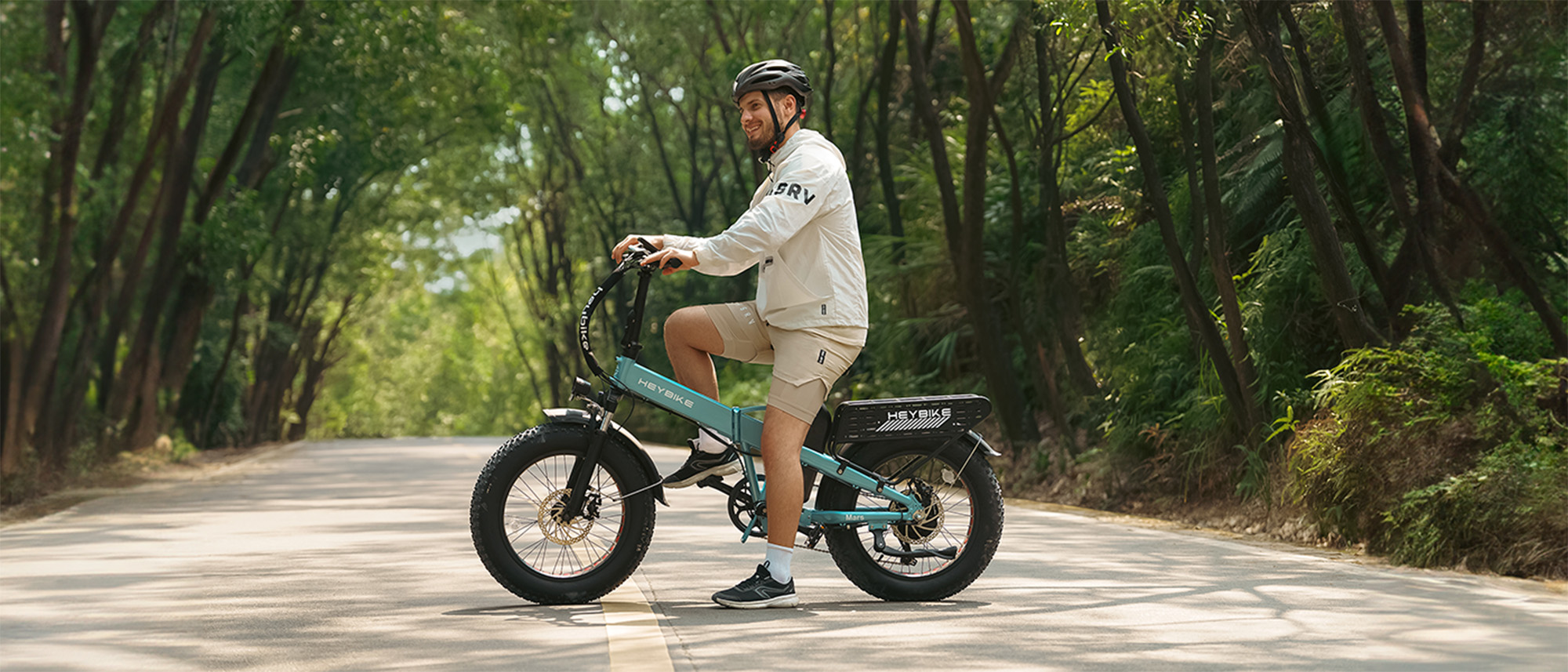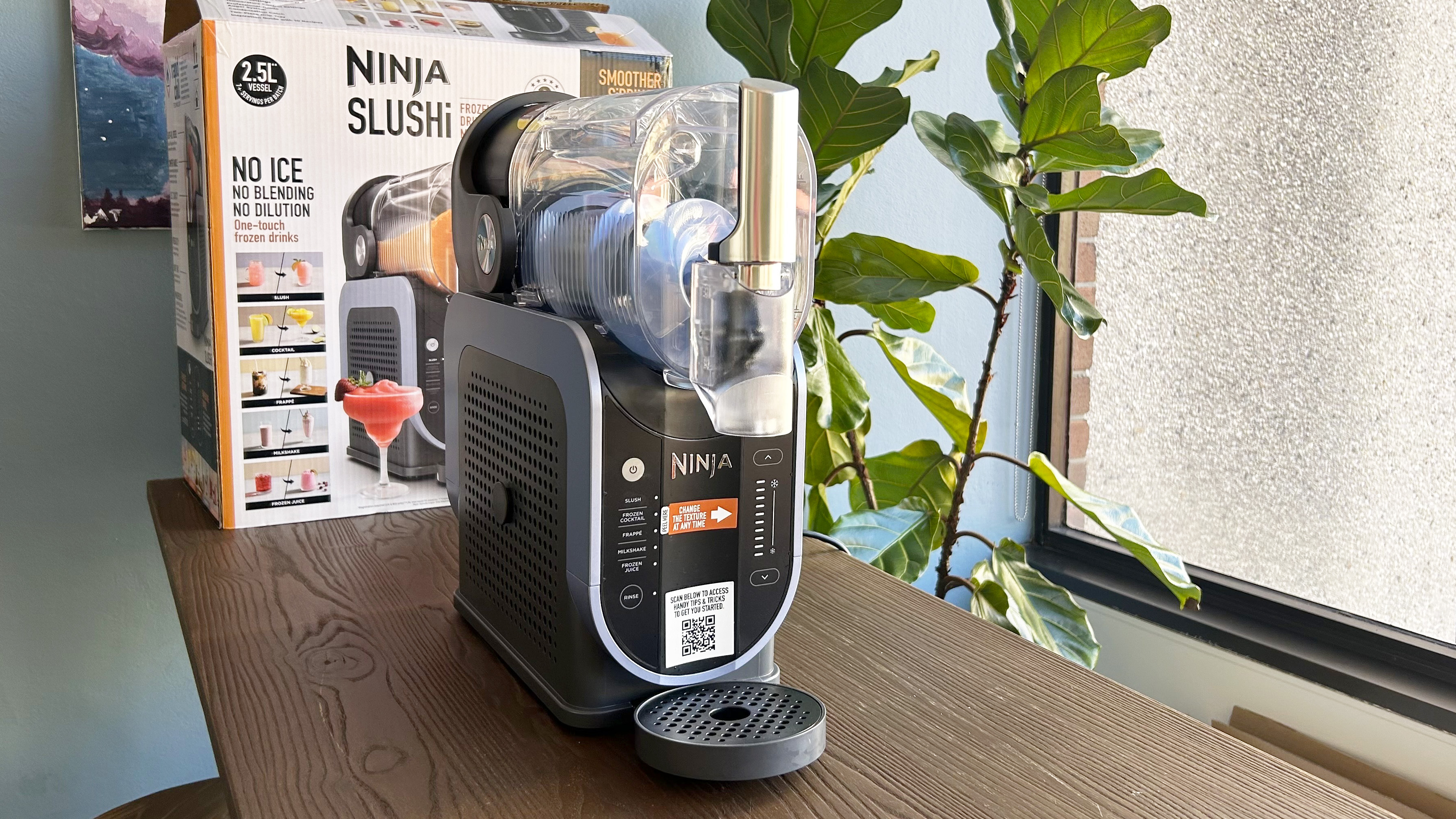Tom's Guide Verdict
Solidly built and fun to ride, the Mars 2.0 is hampered slightly by a two- to three-pedal-stroke lag in the pedaling assist. It’s otherwise a capable commuter for city dwellers and van lifers.
Pros
- +
Big, sturdy rear rack included
- +
Fun to ride
- +
Strong assist once it kicks in
Cons
- -
Two to three pedal-stroke lag before assist kicks in
- -
Heavier than other folding bikes
Why you can trust Tom's Guide
Weight: 75 pounds
Motor: Brushless geared hub motor, 80 Nm, 750W/1200W peak
Battery: 48V, 12.5Ah, 600Wh, external removable Li-Ion
Max advertised range: 45 miles
Max assist speed: 28mph
Drivetrain: Shimano 7-speed
Max weight limit: 330 pounds
Folded dimensions: 37.4” x 21.7” x 27.95”
Unfolded dimensions: 67” x 25” x 49”
Fat-tire folding bikes, as a category, has been expanding rapidly, with many solid offerings that not only allow you to stow the bike easily, but also load it down with cargo and even passengers when unfolded. They’re versatile, slightly goofy-looking, and ultimately prized by those tight on storage space.
The Heybike Mars 2.0, the sequel to the brand’s original Mars folding bike, fits neatly into this category. The Mars 2.0 is quite similar to the original in form and function, but ups the power and battery life.
In my testing of the HeyBike Mars 2.0 for this review, I liked its fun and zippy ride quality, and the strength of its pedal assist — but the lag between pedaling input and the assist kicking in is a bit too long when compared to other electric folding bikes I’ve tested.
HeyBike Mars 2.0 review: Price and availability
The Mars 2.0 costs $1,499 and is available for purchase now on Heybike’s website. Heybike offers a lot of perks, like free shipping, 30-day returns, a 1-year warranty, and even financing through Klarna. On top of that, you can purchase an extended warranty for up to 3 years ($129).
The Mars 2.0 will ship within 2-3 business days and you can also book at-home assembly through Velotooler for an additional charge.
HeyBike Mars 2.0 review: Design
The Mars 2.0 is built around an aluminum frame that comes in four color options. It’s equipped with a suspension fork with 65mm of travel, as well as 20-inch wheels front and rear. The wheels are shod in big, 4-inch-wide tires that can be run at low tire pressures for better traction and impact absorption.
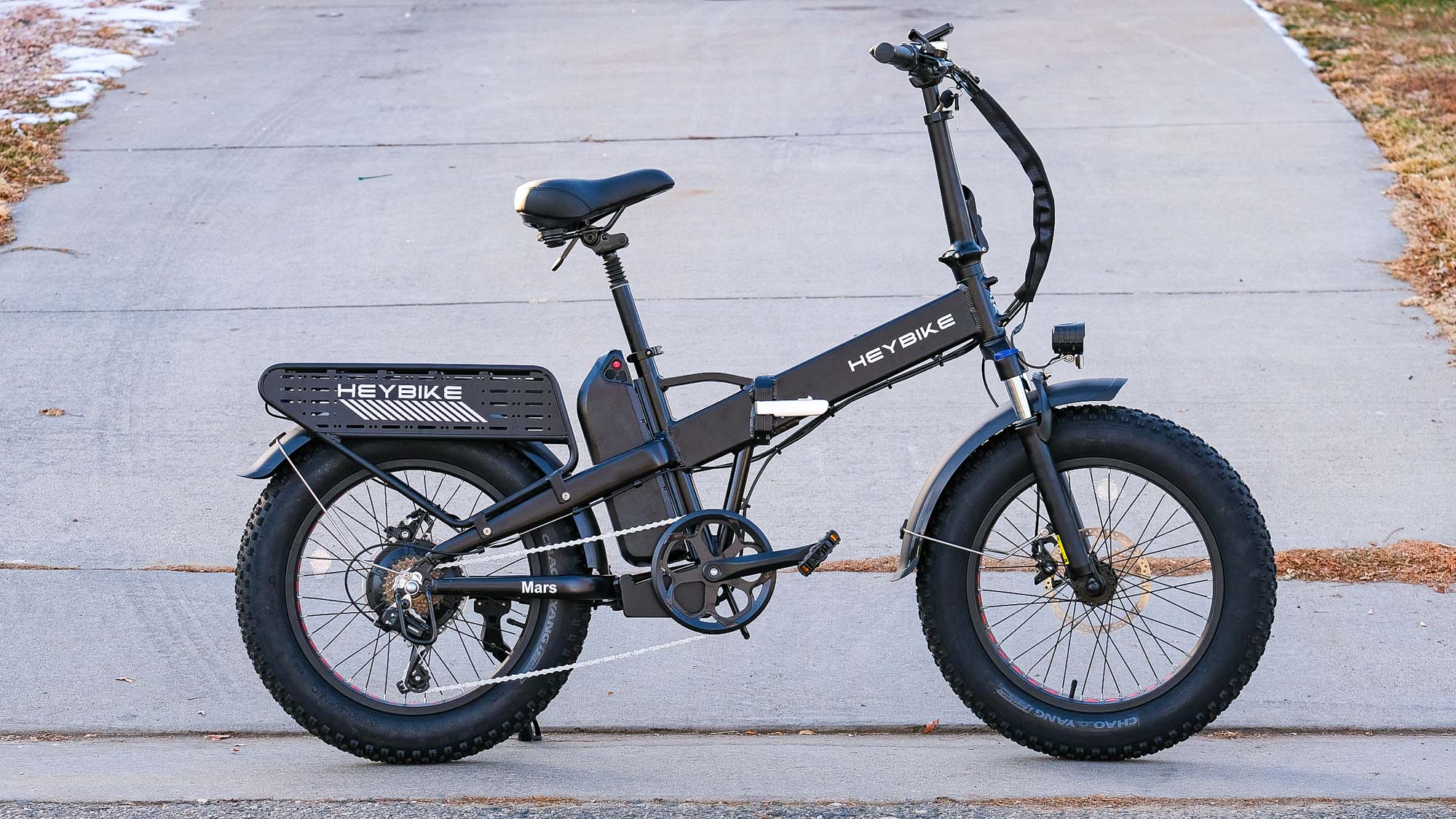
The frame folds at its center. Just release the lever mounted on the main tube and the bike will hinge itself in half. The seat also pivots, as does the long stem. This allows you to fold down the handlebars and seat for the bike’s most compact folded stature.
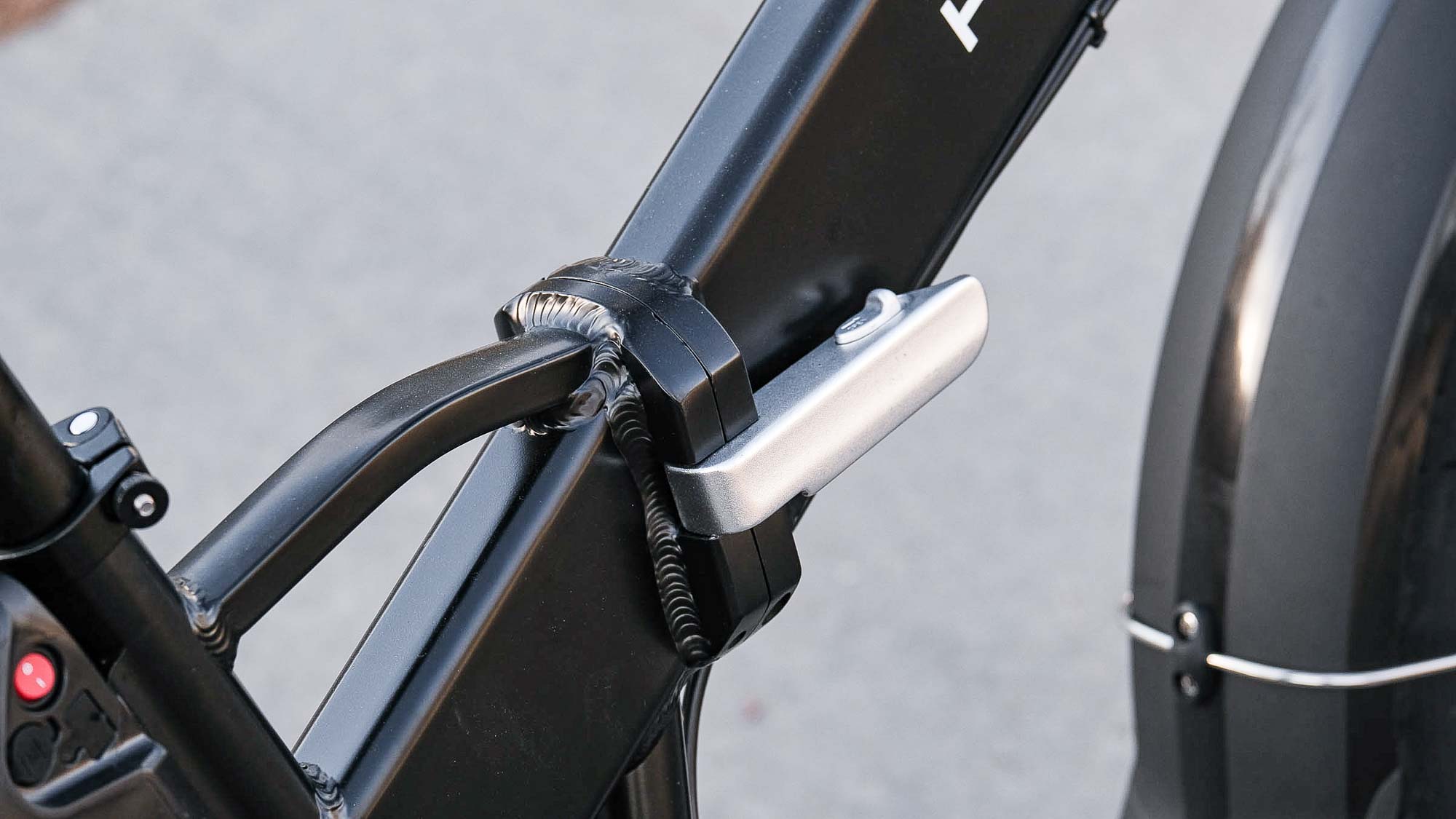
The motor is built into the rear hub and is powered by an externally mounted removable lithium-ion battery. There’s also a throttle, so you can power the bike without pedaling at all if you choose.
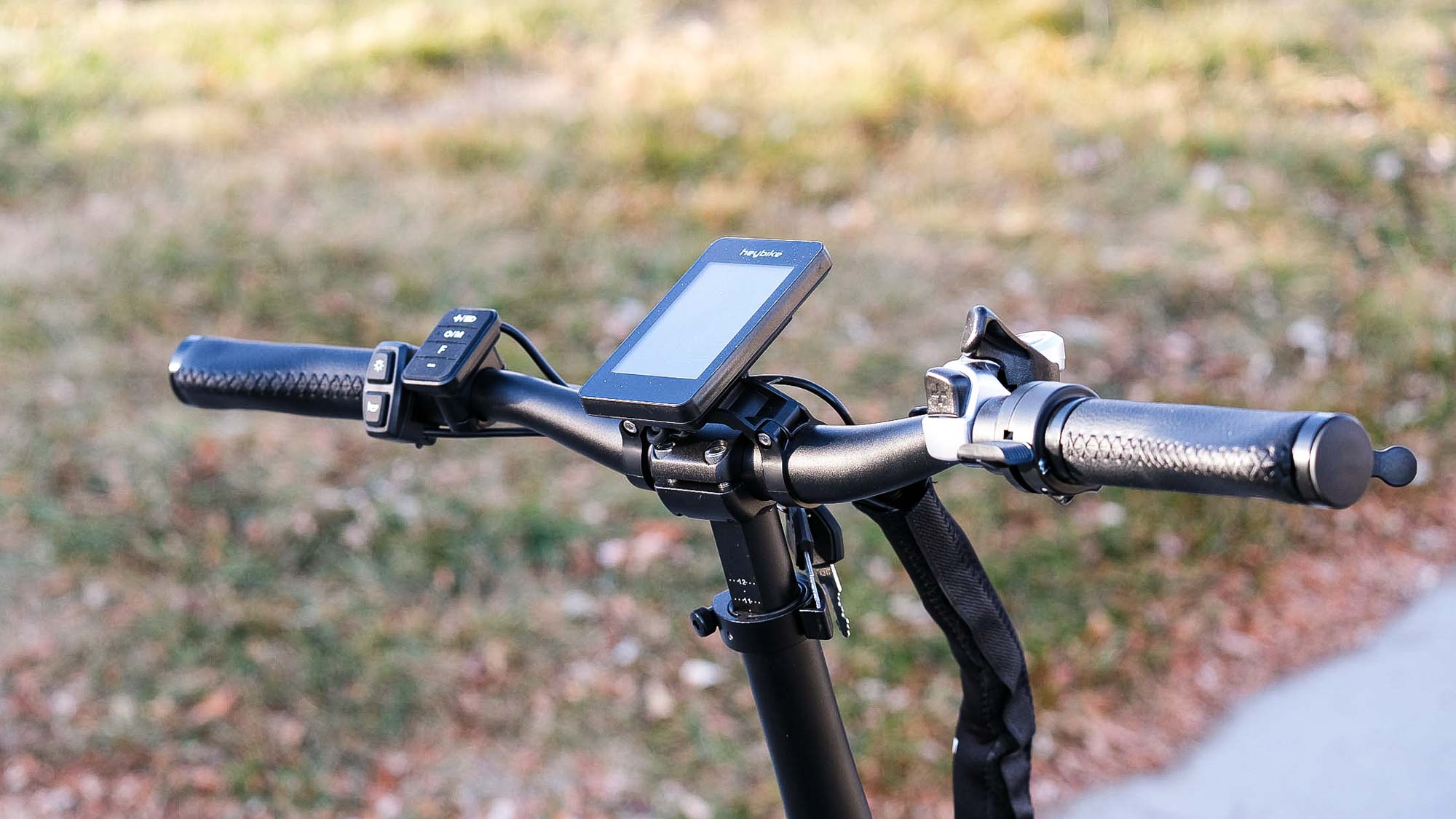
The Mars 2.0 comes stock with a rear rack, fenders, integrated front and rear lights, and mechanical disc brakes for consistent and strong stopping power.
HeyBike Mars 2.0 review: Performance
I first rode the Heybike Mars 2.0 shortly after a snowfall. There were patches of ice and snow all over the roads, so I inflated the fat tires to a lower tire pressure than I would normally use; they provided lots of grip, especially when cornering. The Mars would certainly be a solid choice for winter city commuting.
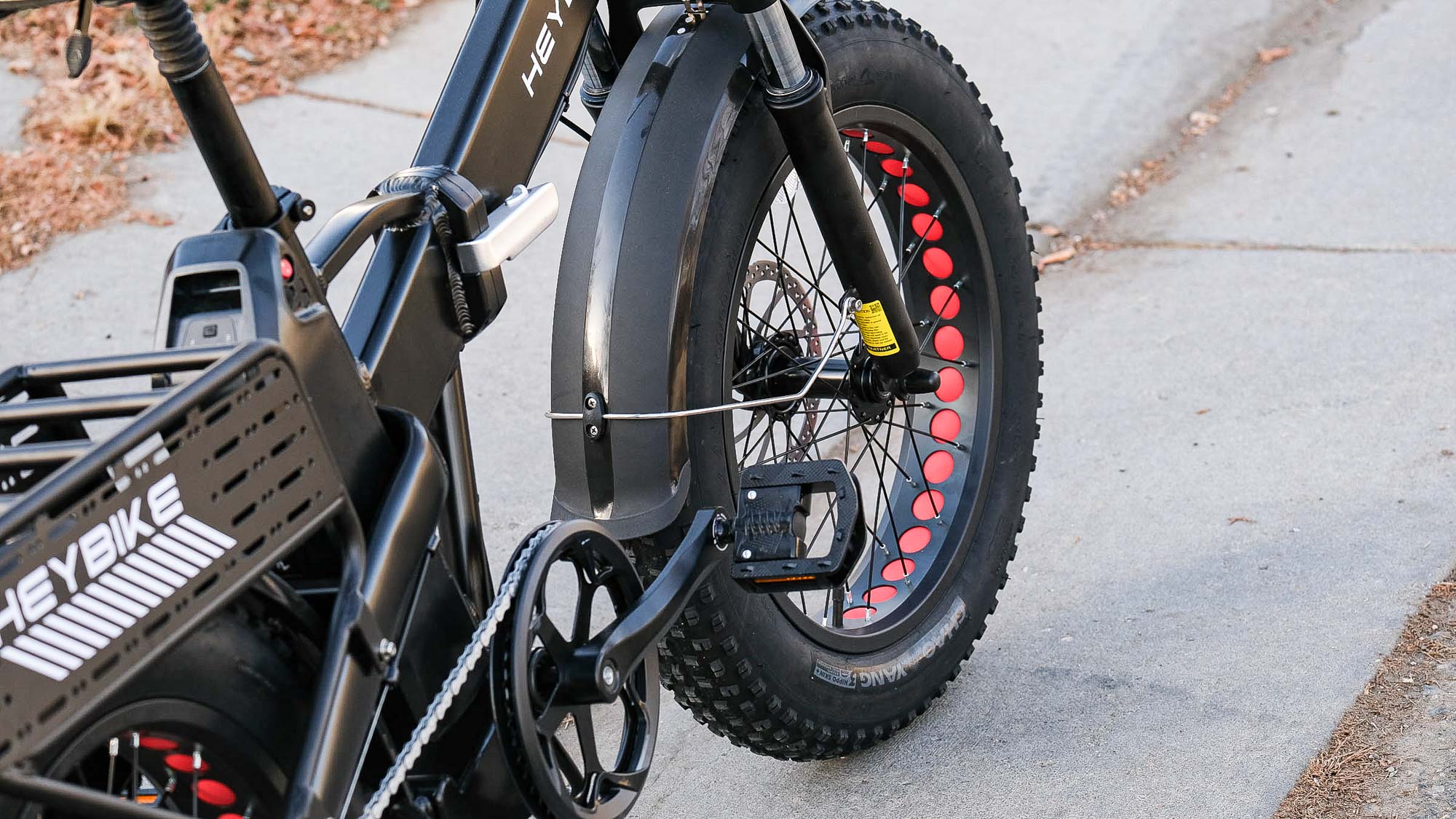
It’s a fun ride, with plenty of responsiveness in the steering. If you’re looking for something that will allow you to really weave through obstacles, the short wheelbase and steep head tube angle will give you that zippy feeling. If you’re after something a bit more stable-feeling, take a look at Aventon’s Sinch.2 instead.
The included rear rack is big and wide, which is a great platform for hauling your stuff. It’s a nice addition to the overall spec, which includes fenders, front and rear lights, and even a (really loud) horn.
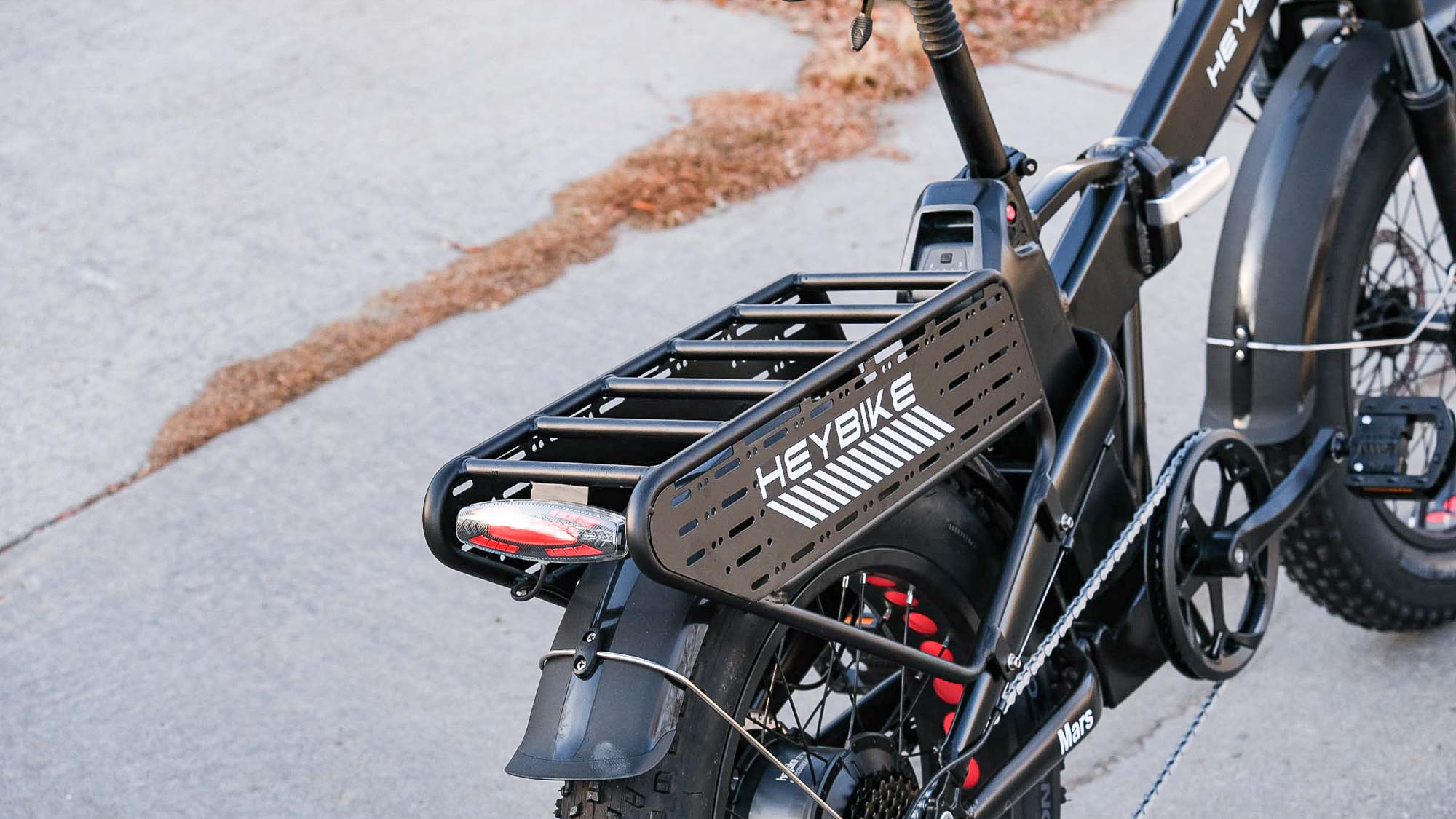
As I’ve mentioned in other folding e-bike reviews, the suspension fork on the Mars 2.0 is largely unnecessary. Since the tires are so large and can be run at low tire pressures, they will handle most of the bump absorption. The fork only adds weight and complexity. That said, the Mars’s fork felt sturdy and supportive, so it wasn’t a detriment overall.
The pedaling assist modes range from 1 to 5, with 5 being the highest assist setting. The lowest assist setting was suitable for flat roads when I wanted to pedal mostly under my own power. The highest setting gets you going fast, and it does so in short order, especially when you boost it with the throttle.
When you’re getting started from a dead stop without using the throttle, there is a two-to-three-pedal-stroke lag before the assist kicks in. It’s annoying, but not a dealbreaker unless you frequently start from a dead stop on hills.
In that scenario, I had to shift to the easiest gear to get the bike going until the assist kicked in, or use the throttle to get the bike in motion. The throttle kicks in quickly enough to get you going on a hill, and in fact was pretty powerful once the motor kicked in.
The folding process is quick and easy, and the first time I did it, I realized I had missed an added feature: the handlebars can be adjusted up and down when you release a quick-release lever on the long stem. That means the Mars 2.0 should feasibly accommodate riders of various heights more easily.

Once folded, the Mars 2.0 is more compact, but like other folding bikes with fat tires, I wouldn’t say it’s diminutive. It’s still bulky and heavy (it weighs 75 pounds), so don’t expect to be carrying it upstairs. There’s also no way to secure the two folded ends together, so the bike can swing open if you’re not careful.
HeyBike Mars 2.0 review: Battery life and performance
I only rode about four miles on my first ride, but it was in sub-30-degree weather with plenty of snow on the ground. Harsh conditions tend to drain batteries more quickly, but the Mars 2.0 still had full battery life after four miles of riding and heavy throttle use.
My second ride was another four miles, and that dropped the battery life only slightly. The maximum advertised range of 45 miles seems more than attainable.
Keep in mind that the battery is externally mounted. That means it’s pretty easy to install or take off, but it also means the battery is more exposed to the elements. External batteries help keep design costs low, too, but you deal with the trade-off, which is making sure the battery is in proper working order more frequently.
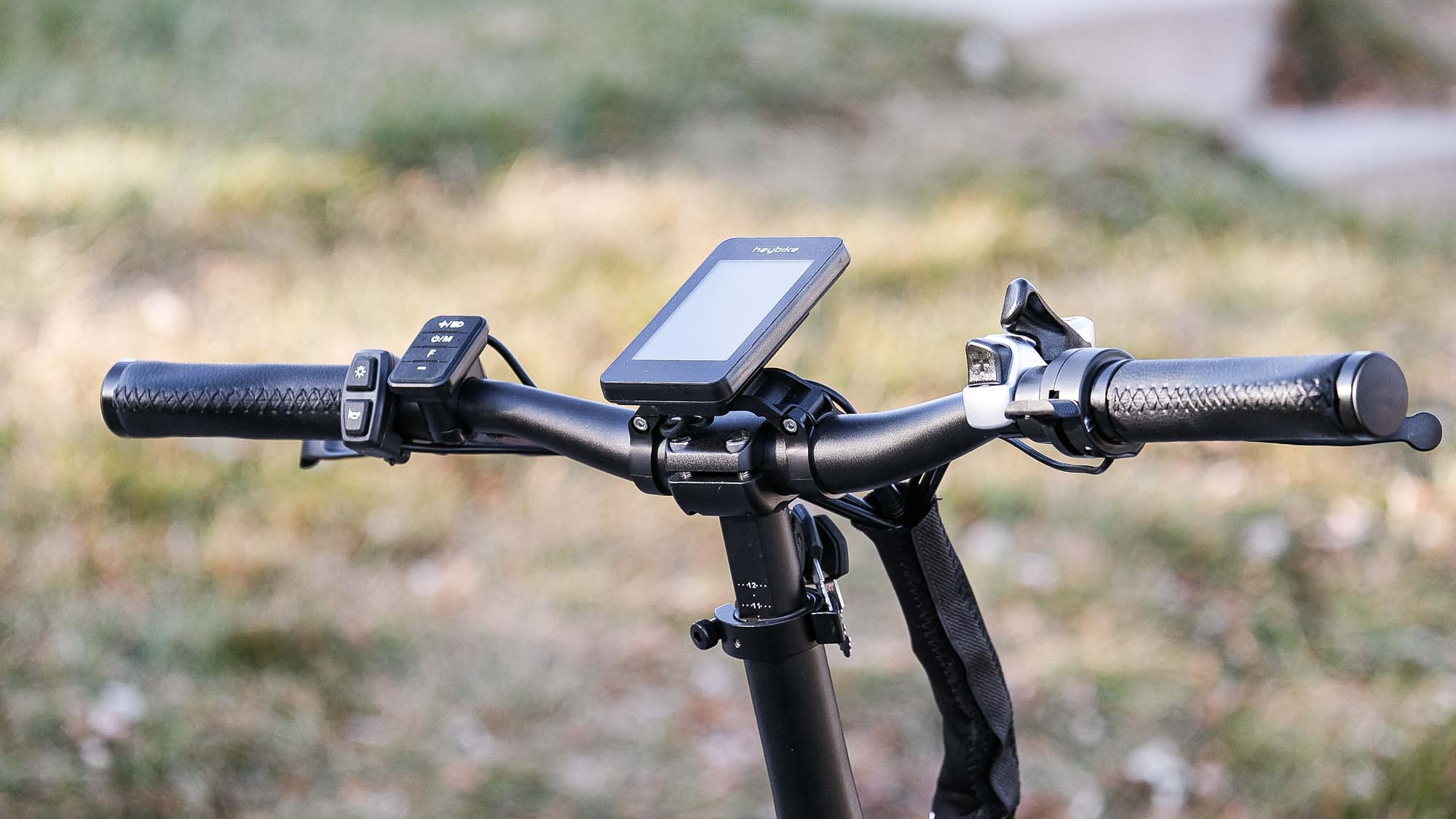
Heybike’s battery also features a physical on/off switch in addition to the power switch mounted to the handlebar. It’s a redundancy I’m not sure is really necessary, and a couple of times during testing I found myself scratching my head wondering why the bike wouldn’t turn on as I pressed the power button on the handlebar … only to remember the other power button on the battery. Again, not a dealbreaker, but it seems like an extraneous step.
HeyBike Mars 2.0 review: Accessories
Heybike lists some specific accessories for the Mars 2.0 right on the bike’s product page. These largely include cargo accessories like pannier bags ($79), a rear rack ($79), and front rack ($89). There’s also an accessory combo that includes a rear rack and panniers for $168.
There is also a separate accessories page that includes add-ons for any Heybike bicycle, as well as replacement parts and even t-shirts and other Heybike merch.
HeyBike Mars 2.0 review: The competition
The Mars 2.0 has some stout competition in the folding e-bike category. Most notable among the competition are the Ride1Up Portola, the Lectric XP 3.0, the Aventon Sinch.2, and Radpower’s RadExpand 5.
The Portola has been my best-in-class go-to so far, and the Mars 2.0 doesn’t change that notion. Both bikes performed quite well in testing, but the Portola is $500 less expensive and nearly 15 pounds lighter (advertised weights). Both are good bikes, but the Portola is by far a better value.
HeyBike Mars 2.0 review: Verdict
The Mars 2.0 offers a fun ride with a powerful motor that will get you up to speed quickly — once it kicks in, after two or three pedal strokes. The included rear rack is wide and stable, and a nice addition to the spec. Overall, I had a lot of fun on the Mars 2.0 and think it’s a good bike for riding on rough roads or even in snow. I would love to see the pedal assist kick in more quickly, but otherwise the Mars 2.0 is a solid buy for anyone looking for a commuting solution that folds down compact enough for the back of the van or a corner of the office.
Dan Cavallari is the former technical editor for VeloNews Magazine, who currently reviews electric bikes, bike lights, and other bike accessories for Tom's Guide. In addition to VeloNews, his work has appeared in Triathlete Magazine, Rouleur Magazine, CyclingTips.com, Road Bike Action, Mountain Bike Action, CycleVolta.com, Tomsguide.com, and much more. Dan also hosts two podcasts on his site, Slow Guy on the Fast Ride: One is about cycling and other outdoor activities, while the other looks at mental health issues. Most recently, Dan also covered the 2022 Tour de France. Dan lives outside of Denver, Colorado with his family.
